Dallas (214) 340-8885
Athens (903) 677-9090
Gun Barrel City (903) 887-4341
Dallas (214) 340-8885
Athens (903) 677-9090
Gun Barrel City (903) 887-4341

It’s not easy to stay active when you have a foot or ankle injury. Most exercises you can do at home or at the gym usually involve the feet and ankles, so you may feel discouraged from physical activity. For some of you, you might be happy to have an “excuse” to not participate in exercise!
Sorry to burst your bubble, but there are alternative exercises you can try. We encourage you to keep active because it can increase circulation and promote faster recovery, as long as you allow your foot or ankle injury to rest and heal.
If your injury is not severe and you can still move your foot or ankle in low-impact exercises, try the following:
If you cannot put any weight on the feet or ankles, try some of the following:
Before starting a new workout regimen, be sure to check with our podiatrist, Dr. Jonathan M. Kletz for a proper assessment. Make an appointment today at any of our Abrams (Dallas), Athens, and Gun Barrell City, TX offices so that we can help you stay active and get back on your feet!
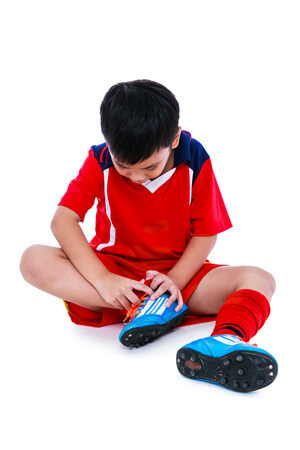
When it comes to your children, they shouldn’t feel pain on their feet. If they complain about pain, it usually indicates an injury or issue that should be addressed.
One of the more common complaints of pain for children is heel pain – especially if they are physically active. There are a few reasons why your child might experience heel pain, including: Sever’s Disease (Calcaneal Apophysitis), plantar fasciitis, heel spurs, Achilles tendonitis, and even fractures.
Heel pain due to Sever’s Disease. For children (between the ages of 8 to 15) with growing feet, Sever’s disease tends to be a common reason for heel pain. Usually aggravated by an injury or other repetitive impact (e.g. jumping or running in cleats), heel pain is caused by a tight Achilles tendon that pulls on the heel growth plate, which has not yet solidified. The repeated tight pulling or an injury can cause inflammation, tenderness, and pain in the rear of the heel bone.
Assessment of symptoms. A podiatrist can usually diagnose Sever’s disease by performing an assessment of the heel bone, which includes squeezing the sides of the heel. If that causes pain, it is an indication that your child might be suffering from this problem. At home, you’ll want to pay attention to your young athlete’s feet. Check for any signs of limping as that could indicate that your child is trying to ignore the pain.
Treatment of Sever’s disease. For mild cases, pain from Sever’s disease can resolve on its own as the bone hardens. If the pain is not persistent and extreme, rest and applying a cold compress can help to reduce pain and inflammation. If your child is in the middle of a season or tournament, be sure to use heel cups or orthotics, as well as stretching exercises to help prevent worsening symptoms.
For more intense pain, your child should rest the foot and not participate in sports for a couple of weeks. The heel bone may even benefit from immobilization in a boot. If your child continues to play sports, it may cause further problems that require more treatment.
Make an appointment. Do you suspect Sever’s disease to be the reason why your child is complaining of heel pain? Come see our podiatrist, Dr. Jonathan M. Kletz for a proper assessment and appropriate treatment. Make an appointment today at any of our Texas offices in Abrams (Dallas), Athens, and Gun Barrell City so that we can help your child get back on his or her feet!
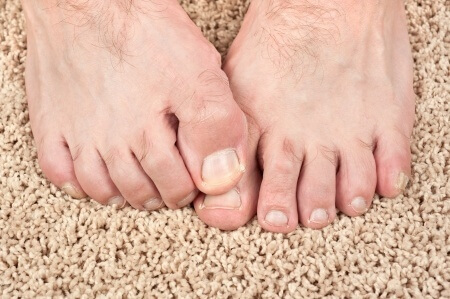
Who can be affected by fungal toenails?
The fungus can infect anyone with toenails. Those with weak immune systems are less likely to be able to fight it off.
What is it?
Fungal toenails, or Onychomycosis, is a fungal infection that is caused by the same fungus tinea that results in athlete’s foot, jock itch, and ringworm. It can cause toenails to become thick, hard, yellow or gray, and brittle. They are contagious and can be unsightly.
When are you most likely to be affected?
Fungal toenails can arise when the fungus enters the skin and nails through cuts, scrapes, and/or when people have weakened immune systems. Any wounds should be treated promptly to prevent fungal, viral, and bacterial infections. Those who are sick, have poor circulation, have diabetes, or have skin conditions like eczema or psoriasis are more at risk of being affected by fungal toenails and athlete’s foot.
Where did you get it?
The tinea fungus grows in dark, damp, and warm places, such as in shoes, locker room floors, communal showers, and shared towels or toenail clippers.
Why is it important to treat?
Not only do they affect your toenail health, making them more prone to breaking, they are also embarrassing and unsightly. Additionally, you can spread them to family or other members of your gym if you fail to keep up hygienic practices, such as wearing protective footwear in communal areas and not sharing towels.
How do you treat it?
Depending on how long you’ve had the condition and how severe it is, treatment options include:
Hyperblue Laser therapy at our office (several painless treatments with no recovery period)
Are you sick of battling with fungal toenails? Come see our podiatrist, Dr. Jonathan M. Kletz for prompt treatment. Make an appointment today at any of our Abrams (Dallas), Athens, and Gun Barrell City, TX offices so that we can help you regain your nail health!
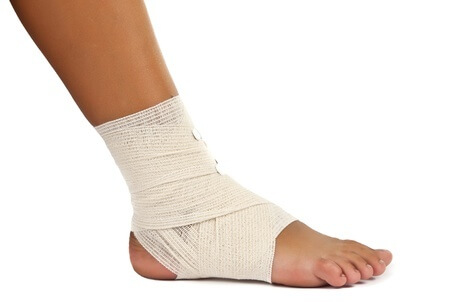
No, we are not talking about the grain, but rather, the RICE method. The letters R, I, C, and E in RICE methodstand for: Rest, Ice, Compression, and Elevation. After a foot or ankle injury, applying the RICE method can help to relieve pain and swelling symptoms. It is used until the injury heals, or if symptoms do not get better, until you can be seen by a medical professional for further treatment.
Please note: For severe injuries, especially if you suspect a broken bone or torn ligament, you should seek prompt medical attention at urgent care or the emergency department.
For mild or moderate injuries, such as a bruise from a heavy object or a sprained ankle, or even pain from overuse injuries like Achilles tendonitis or Plantar fasciitis, the RICE method can be very effective. Read on for a more detailed description of each of the components of the RICE method:
“R” is for “Rest” - Stop what you are doing. Whether it is playing a sport, walking to work, or jogging in the park, you should immediately stop and assess your injured foot or ankle. If possible, do not put weight on it and if necessary, sit down to prevent further injury.
This can also apply to resting from the activity you are doing to allow your injury to fully heal. If you were playing a sport, you may have to sit out the rest of the game, or the season to fully “rest” your foot or ankle. If you are a ballet dancer, it may mean missing the next performance or more. Look at it this way: it’s better to miss a little now, than to risk not being able to do it at all.
“I” is for “Ice” - Apply a cold compress or ice on the injured are for 15 to 20 minutes at a time. This will prevent or reduce swelling and numb some of the pain.
“C” is for “Compression” - To promote healing and reduce or prevent swelling, you can use compression socks or bandages on the injured area. Even after a few hours, you can use compression to support your injured leg until it heals.
“E” is for “Elevation” - Whenever possible, keep your injury elevated above heart level (or at least level to your hip when you are sitting). This will also prevent or reduce swelling to the injured area.
Have you experienced an injury that won’t get better within a couple days? You should consult with our podiatrist, Dr. Jonathan M. Kletz, at Texas Foot Works. He will assess your foot or ankle injury to get you the right treatment. Make an appointment today at our offices located in Abrams (Dallas), Athens, and Gun Barrell City, TX!
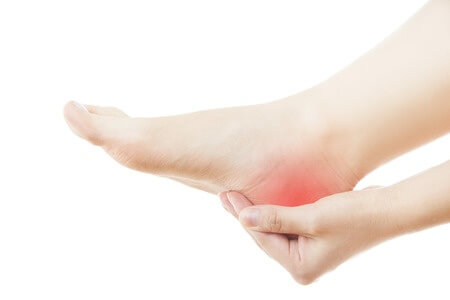
For most, plantar fasciitis pain comes on gradually. Your plantar fascia (fibrous tissue along the bottom of the feet) helps you stay mobile and connects the balls of the feet to your heel bone. Repetitive movements often required in sports or certain jobs can make it become inflamed.
If you notice that the bottom of your feet feel sore or tight, try one or more of the following 10 home remedies to prevent the pain from getting worse:
If your plantar fasciitis pain does not get better after trying some of these home treatments, consult with our podiatrist, Dr. Jonathan M. Kletz, at Texas Foot Works. Our foot doctor will assess your feet to get you the right treatment. Make an appointment today at any of our offices in Abrams (Dallas), Athens, and Gun Barrell City!
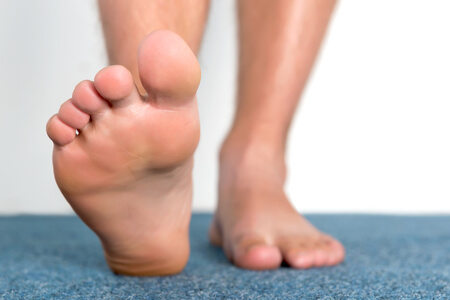
Osteoporosis, a disease in which your bones slowly lose more calcium than it absorbs, is usually thought of as a disease that your grandparents get and suffer from. And for the most part, that’s true. However, those with early onset osteoporosis can be diagnosed even before the more typical age of 50 years old.
The good news is that it can be prevented or slowed with good nutrition and strength training exercises. Even after diagnosis, medications are available that may help slow the bone loss process and even restart bone building.
How do your feet come into play?
Don’t forget, each foot is made of 26 bones, which means that the feet account for about a quarter of the all the bones in the body. This means that osteoporosis, a systemic disease of the bones, is likely to affect your feet and ankles.
Since your feet have to bear the weight of your entire body, that puts more pressure on them as they endure impact on the ground. The feet and ankles are more likely to experience:
In fact, the bones can become so brittle that when you go in for a checkup on pain, redness, and swelling on your feet, our podiatrist may detect a fracture, and also determine that you may have osteoporosis. That’s right, some people find out they have osteoporosis because of a foot fracture!
What can you do to reduce risks
Do you or someone in your family have osteoporosis? It may be passed down genetically, so consult with our podiatrist, Dr. Jonathan M. Kletz, at Texas Foot Works. He will assess your feet to get you the right diagnosis so that you can get the appropriate treatment. Make an appointment today at any of our Abrams (Dallas), Athens, and Gun Barrell City, TX offices!
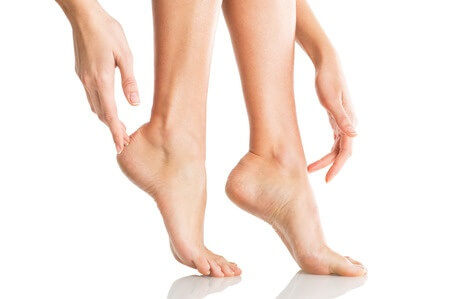
Did you know that diabetes can affect not only your blood sugar levels, but can also be damaging to your kidneys, eyes, nerves, and feet? In fact, for those who do not have severe symptoms, losing feeling in the feet can be the first sign of diabetes. After an assessment by a podiatrist or other medical professional, patients with this condition, known as neuropathy, in the feet can eventually be diagnosed with diabetes.
Unfortunately, it doesn’t stop there. Neuropathy is a result of nerve damage due to high levels of blood sugar. It can have effects beyond a loss of sensation – it can lead to reduced circulation and healing, because your body can no longer communicate properly to serve your feet’s needs. The smallest cuts or injuries can become larger issues, such as ulcers. That’s why it’s important to take care of your feet, whether or not you have diabetes. After all, about 10% of the US population has diabetes (including those who are not yet diagnosed).
The following are diabetic foot exam steps that you can perform on your own. It can help you to find signs of diabetes-related foot problems that you can treat sooner, rather than later. If you have already lost sensation in your feet, be sure to check your feet daily:
Foot care for diabetics is very important. If you notice any changes in your feet, consult with our podiatrist, Dr. Jonathan M. Kletz, at Texas Foot Works right away. He will assess your feet and ankles to see what treatment you may need. Since an unnoticed problem can become way worse and more difficult to treat, it’s important that you make an appointment today at any of our offices in Abrams (Dallas), Athens, and Gun Barrell City, TX!
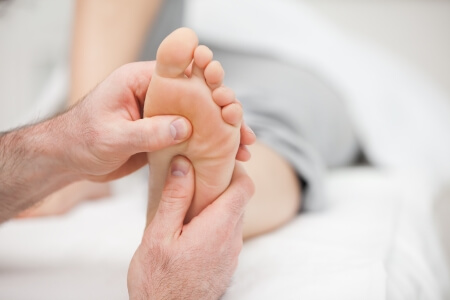
In many cases of acute injuries, as well as with chronic pain symptoms, podiatrists will often prescribe orthoticsas part of rehabilitation or pain management. Depending on the reason for prescribing orthotics, they can be useful for prevention of future problems (e.g. when used for children), immobilizing injuries to prevent worsening symptoms (e.g. after foot or ankle surgery), and for treating painful symptoms of foot or ankle deformities.
There are generally two types of orthotics that our foot doctor will prescribe: accommodative foot orthoses and functional foot orthoses.
Accommodative orthotics are:
Functional orthotics are:
Both are created by taking a mold of your feet and/or ankles using plaster or foam. Mechanical or optical scanners can also help to take measurements for an accurate fit. This process takes place during an office visit, taking into consideration your footprint, gait, and any inflammation or deformity in the feet or ankles. The end goal is to either relieve symptoms so that you can resume normal activities without pain, or to deter/correct a deformity that can keep getting worse.
For additional questions regarding how orthotics can help your foot or ankle pain, consult with our podiatrist, Dr. Jonathan M. Kletz, at Texas Foot Works. He will assess your feet and ankles to see if orthotics will work for you. Make an appointment today at any of our Abrams (Dallas), Athens, and Gun Barrell City, TX offices!

Even post-Thanksgiving, there’s a lot of traveling you might have to do. The December holidays, as well as New Year’s Eve celebrations, not to mention skiing or snowboarding trips, can mean more flights and/or bus rides coming up. As you pack your bags and try to remember every single item you may need, we have a few extra suggestions for you. The following “Top 10 Tips for Traveling Feet” will (hopefully) remind you that your feet, which carry you everywhere, will need some care while taking you on your travels:
For questions regarding travel and your feet, consult with our podiatrist, Dr. Jonathan M. Kletz, at Texas Foot Works. He will assess your feet and ankles to give you tips for a smooth trip. Make an appointment today at any of our offices in Abrams (Dallas), Athens, and Gun Barrell City, TX!
 Foot and ankle injuries are common among people who participate in sports. Several factors contribute to this. They include failing to stretch or warm up properly, not wearing the proper type of shoe and not taping or providing other types of support for the ankle or foot. The most common foot and ankle injuries suffered by people involved in sport are plantar fasciitis, ankle sprains and Achilles tendon damage or ruptures. If not treated properly they can lead to permanent disability.
Foot and ankle injuries are common among people who participate in sports. Several factors contribute to this. They include failing to stretch or warm up properly, not wearing the proper type of shoe and not taping or providing other types of support for the ankle or foot. The most common foot and ankle injuries suffered by people involved in sport are plantar fasciitis, ankle sprains and Achilles tendon damage or ruptures. If not treated properly they can lead to permanent disability.
Plantar fasciitis is a painful condition. It is inflammation of the plantar fascia, the thick fibrous band of tissue running from the heel to the base of the toes. There are several effective treatments for this ailment. Doctors often proscribe rest, massages, stretching, night splints, physical therapy, anti-inflammatory medication, corticosteroids or surgery usually in that order. The most effective treatment for plantar fasciitis is orthotics, such as foot supports. Surgery is occasionally used as a last resort.
The Achilles tendon is the largest tendon in the body. It connects the calf muscles to the heel bone. Running, jumping and walking all impact this tendon. Two common injuries to the Achilles tendon are tendonitis and a rupture of the tendon. Tendonitis is inflammation in the tendon often caused by an increase in the amount and intensity of stress placed on it. It can either be treated non-surgically with rest, ice or anti-inflammatory medication or surgery may be required. A rupture (tear) of the Achilles tendon can be treated by placing the lower leg in a cast for several weeks or with surgery. Many physicians feel surgery is the better option because it lowers the risk of re-ruptures. Both methods require 4 to 6 months of rehabilitation.
Ankle sprains are the most common sports related foot and ankle injury. A sprain occurs when the ligament holding the ankle bones and joint stretches beyond its normal range. It can be treated non-surgically with a combination of rest, ice wrapped around the joint for 30 minutes immediately after injury, compression by a bandage and elevating the ankle above the heart for 48 hours. This combination is referred to as RICE. Severe ankle sprains in which the ligaments are torn may require arthroscopic or reconstructive surgery followed by rehabilitation
Treating these injuries is relatively simple if they are identified and addressed early. Many athletes dismiss the initial aches and pains associated with injury as just soreness or tired muscles. Their first response is usually to try to work through it. This can lead to serious problems. Many minor injuries are made far more serious when athletes continue to put strain and pressure on them. That attitude can change a mild strain into a serious strain and a minor tear into a rupture. Athletes should have unusual aches and pains evaluated by a skilled, licensed medical professional.